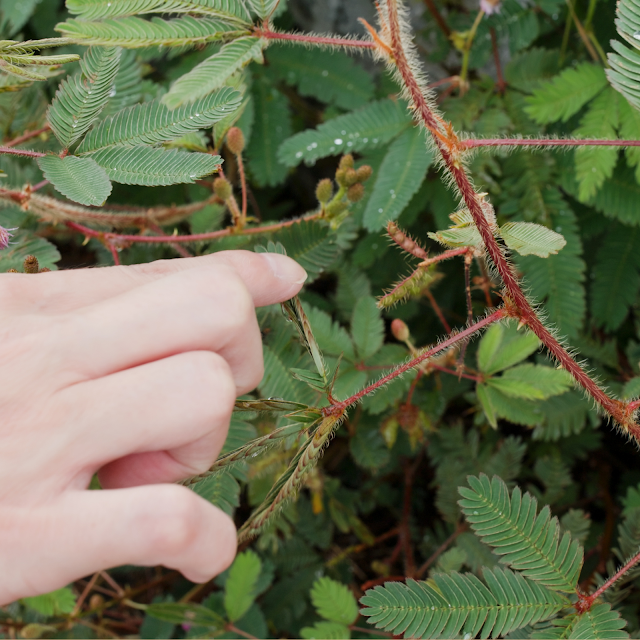Some of my fondest childhood memories are like vibrant brushstrokes on a canvas. There was one memory that stood out and captured my imagination for years: the mysterious plant that folded its leaves when touched.
It all started in elementary school when some friends excitedly told me about this magical plant they had seen. They described it as having the ability to close its leaves when touched. When I finally saw the plant, with a mix of excitement and trepidation, I touched the leaves. They instantly folded up as if the plant were saying ‘not today sis!’. It felt like I had met a kindred spirit in plant form.
I was curious about what made the plant behave this way. Back then, with limited internet access, I had to rely on oral explanations from various relatives and friends. The most amusing part was that no one seemed to know the plant’s name!

As I grew older, the memory of that magical plant stayed with me. I was thrilled to discover that the plant I had once deemed “magical” was actually Mimosa Pudica, or the sensitive plant. Native to Central and South America, this plant is renowned for its dramatic leaf-closing trick, which serves as a defence mechanism against potential threats. It reacts not only to touch but also to changes in light and even the movement of the wind—a phenomenon scientists call “thigmonasty or seismonasty,” driven by changes in turgor pressure within the plant cells.
Beyond its charming antics, Mimosa Pudica has uses in traditional medicine and adds a touch of beauty to gardens with its delicate pink flowers. Thriving in both sunny and shady spots, it’s a favourite among botanists and garden enthusiasts alike.
I can’t wait to come across a Mimosa Pudica, give it a gentle touch and watch it show it’s feelings.
Bullet points of some ideas detailing what you’d write about if you had to write 2200 words on the topic.
1. Interview People: Gather perspectives from individuals on their initial impressions of the plant and how their views have evolved over time.
2. Traditional Medicine Uses: Provide information on how Mimosa Pudica is used in traditional medicine, detailing the ailments it is believed to treat.
3. Defence Mechanisms: Explore what potential threats the plant is defending itself from with its leaf-closing mechanism.
4. Reproductive Methods: Describe how Mimosa Pudica reproduces and disperses its seeds in different countries and regions.
5. Educational and Documentary Insights: Include findings from educational resources and nature documentaries created by experts who have studied the plant extensively.
Video Thumbnail
As a child, I loved creating art with my parents and exploring nature, but the most memorable discovery was Mimosa Pudica, a plant that closes its leaves when touched. Initially fascinated by its magical response, I later learned that its leaf movement is a defence mechanism. This plant’s unique behaviour and charm left a lasting impression on me.




